
Formica is a genus of ants of the family Formicidae, including species commonly known as wood ants, mound ants, thatching ants, and field ants. Formica is the type genus of the Formicidae, and of the subfamily Formicinae. The type species of genus Formica is the European red wood ant Formica rufa. Ants of this genus tend to be between 4 and 8 mm long. Ants belonging to the Formica genus possess a single knob or bump located between their thorax and abdomen. These ants primarily feed on honeydew, a sugary liquid produced by aphids. Formica ants appear to take on a shepherding role with smaller aphids, relocating them to different parts of plants to ensure a continuous food source for the aphids. By doing so, the ants can establish a relatively sustainable honeydew supply for both themselves and their colony.
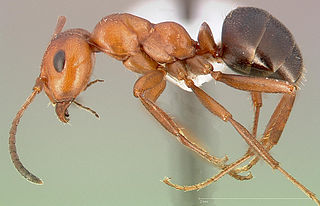
Formica dakotensis is a species of ant in the family Formicidae.

Formica comata is a species of ant in the family Formicidae.

Formica accreta is a species of ant in the family Formicidae.
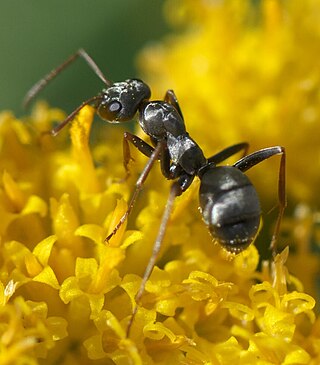
Formica podzolica is a species of ant in the family Formicidae.

Formica integra is a species of ant in the family Formicidae.

Formica gynocrates is a species of ant in the family Formicidae.

Formica gagatoides is a species of ant in the family Formicidae. It is found in Europe.
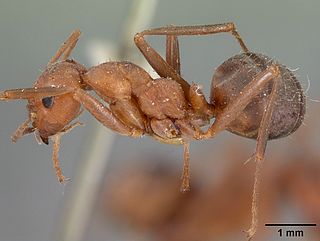
Formica difficilis is a species of ant in the family Formicidae.

Formica integroides, also known as the Vinegar Ant, is a species of ant in the family Formicidae.
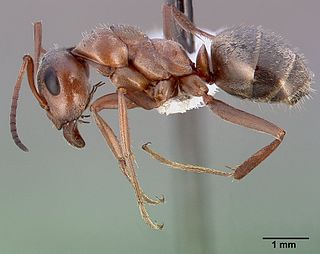
Formica aerata, the grey field ant, is a species of ant in the family Formicidae.

Formica aserva is a species of ant in the family Formicidae.

Formica neoclara is a species of ant in the family Formicidae. It is a generalist that has been known to have mutualistic relationships with 42 different species of aphids.

Formica limata is a species of ant in the family Formicidae.

Formica manni is a species of ant in the family Formicidae.

Formica gnava is a species of ant in the family Formicidae.

Formica pergandei is a species of ant in the family Formicidae.
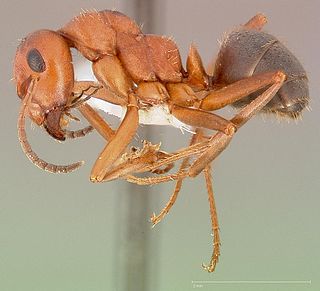
Formica densiventris is a species of ant in the family Formicidae.

Formica ulkei is a species of ant in the family Formicidae. Carlo Emery described the species in 1893, and named it after Titus Ulke, a mineralogist who collected ants and beetles while employed by a mining company in South Dakota. Ulke sent specimens to his father, Henry Ulke, who passed the ant samples to Theodore Pergande, who in turn sent them to Emery.

Formica archboldi is a species of ant in the family Formicidae. They are known for their abnormal behavior, which includes the collection and storage of Odontomachus (trap-jaw) ant skulls.




















